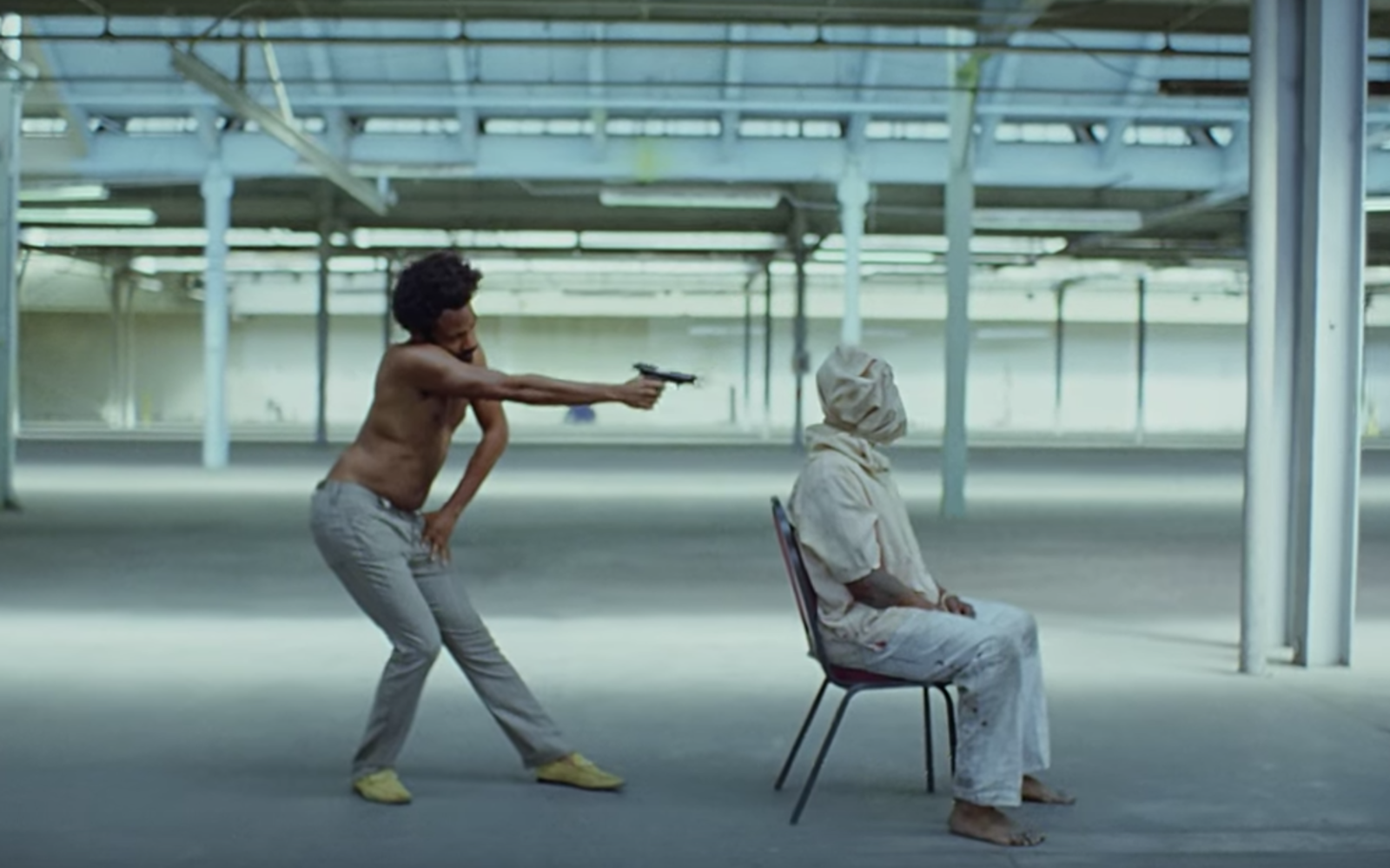
Childish Gambino’s This is America is a piece of revolutionary art released into the numbed crude world of American pop music. Retaining its position at the top of the Billboard 100 for two consecutive weeks and certified platinum by RIAA (Recording Industry Association of America), Donald Glover’s alter ego is anything but ‘childish’ in his subtle references to African American conflict. A tease filled with philosophical and iconic symbols of black violence, powerlessness, and white cultural supremacy, the wild shuffle has sparked debate for its thorough critique of ‘White America’ and the oft-shadowed squalor of inter-racial distance and discrimination. In the context of the rampant gun violence and abuse propelled by racial intolerance in the States and its ironic commercial obsession with afro beat and black culture, this song stands to be both a relevant as well as an indispensable reflection of the country’s reality masked by the embossed and widely advertised ‘American dream’. “It’s a tribute to the cultural dominance of trap music and a reflection on the ludicrous social logic that made the environment from which trap emerges, the logic where money makes the man, and every black man is a criminal.”- Frank Guan in the Vulture.
A critical analysis of the music and its videography exposes us to various fundamental shades of Black Existentialism. The song flows into the realms of avant-garde iconoclasm, symbolism, and evolutionism. It gives voice to the struggle of the black man as he strives for socio-economic security and acceptance in an inherently Caucasian society — all the while tackling an existential crisis rooted in his disassociation from his African cultural heritage and a simultaneous social exclusion from the American identity. Stuck in the empty middle left to jive in the desolate wreckage.
The song opens with a smooth whispered melody of afro gospel. A man sits in a chair and strums the guitar as Gambino shuffles in the back — introducing sense of comfort and stability. The cadence unexpectedly shifts to a violent spitball trap as Glover brandishes his firearm and shoots the performer through the back of his head — executing both the man and the false sense of serene security. “This is America”, he states with a deadpan expression as he unravels his artistic rebellion against the state’s emotionless and unwarranted dehumanization of his community — a comment on the murder of innocents that has of late printed America’s national news in a pained red. He returns to this psychopathic unprovoked slaughter as he waltzes past a lively choir and guns them down with a machete. “This is America”, he promises once again as he moves on into the crowd. Popular speculation identifies this carnage as emblematic of the Charleston Massacre in South Carolina, where an armed white, Dylann Roof, similarly gunned down African Americans at their church.
This, however, is just one of the many imperative images to be burned into viewers’ mind as they watch the video; images that are meant to be revisited. Gambino wears Confederate Army pants as he performs traditional African dances such as the Gwara Gwara and dominates the camera, distracting us from the anarchic bloodbath and criminality raging in the background. We see innocent African children imitate his moves and synchronize themselves along his gyrations — a crude reflection of the corrupted ideas and viciousness that infiltrates the fevered impressionable youth. The video pans across a white warehouse lit up by pale fluorescent, held up by white pillars melting into the darkness and clashing against the darker melanin — a cynical vision of white supremacy oppressing the black masses running scared, plundering, vandalizing, killing, and dying to the loud thumps boasting of a murderous, conceited America. Gambino dances on top of a blood red car stuck in a mass of abandoned automobiles, across halls lit by sirens and panic, amongst a team of children removed from the outside. The intense contortions of his musculature are disturbing yet alluring, inspiring an odd bodily betrayal as kinesthetic empathy takes over and makes us mirror Gambino, despite being simultaneously disturbed by the audiovisual cues. “Glover forces us to relive public traumas and barely gives us a second to breathe before he forces us to dance.”- Doreen St. Félix, writing in The New Yorker.
He sings of a powerful privileged black man. Armed and proud, in pursuit of the dues owed to his people, strutting through a material cold silver America. The video ends with Gambino running through a darker corridor into the white light, chased by blurred visions, as the omnipresent lyric states his race as his disability, “you just a black man in this world, you just a barcode…you just a big dog, I kenneled him in the backyard”. The auditory cues are just as pertinent as the visuals. Sounds of screaming, authoritative shouts to ‘get down’ and take cover, melting police sirens, all aligned with the artist’s rap and shielded disordered backdrop.
“What Gambino put together is a true picture of America, where so many of us get to dance and sing and laugh and create,” writes Isaac Bailey in CNN. “All the while others are largely ignored and trapped in the background, struggling and sometimes dying in a sea of ugliness that many of us would rather not acknowledge, knowing it would ruin the pretty pictures we’d rather focus on.”

